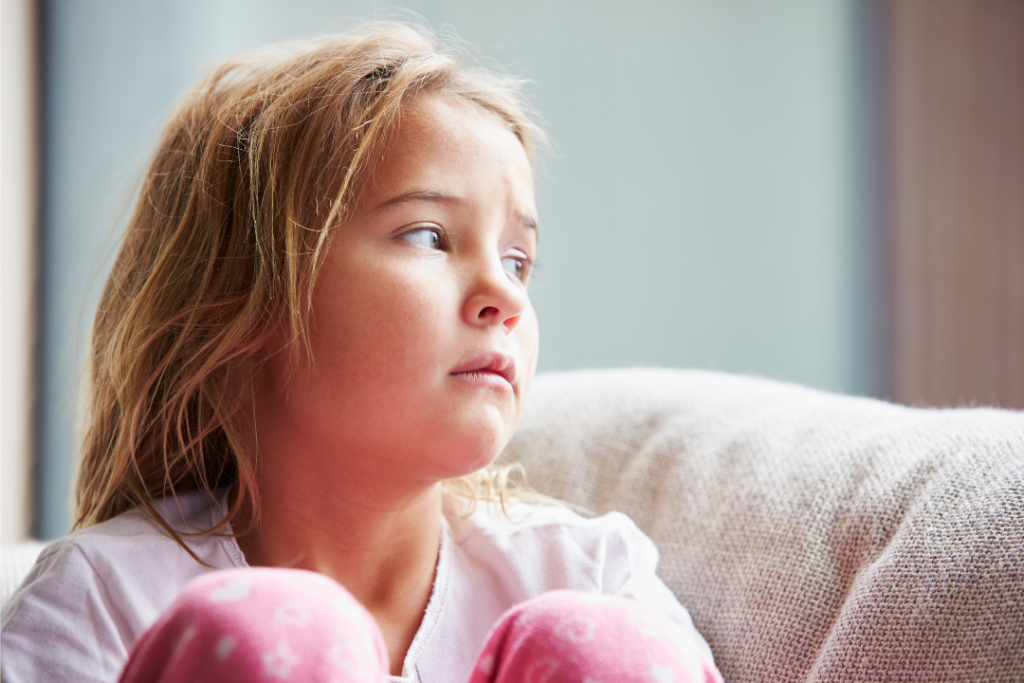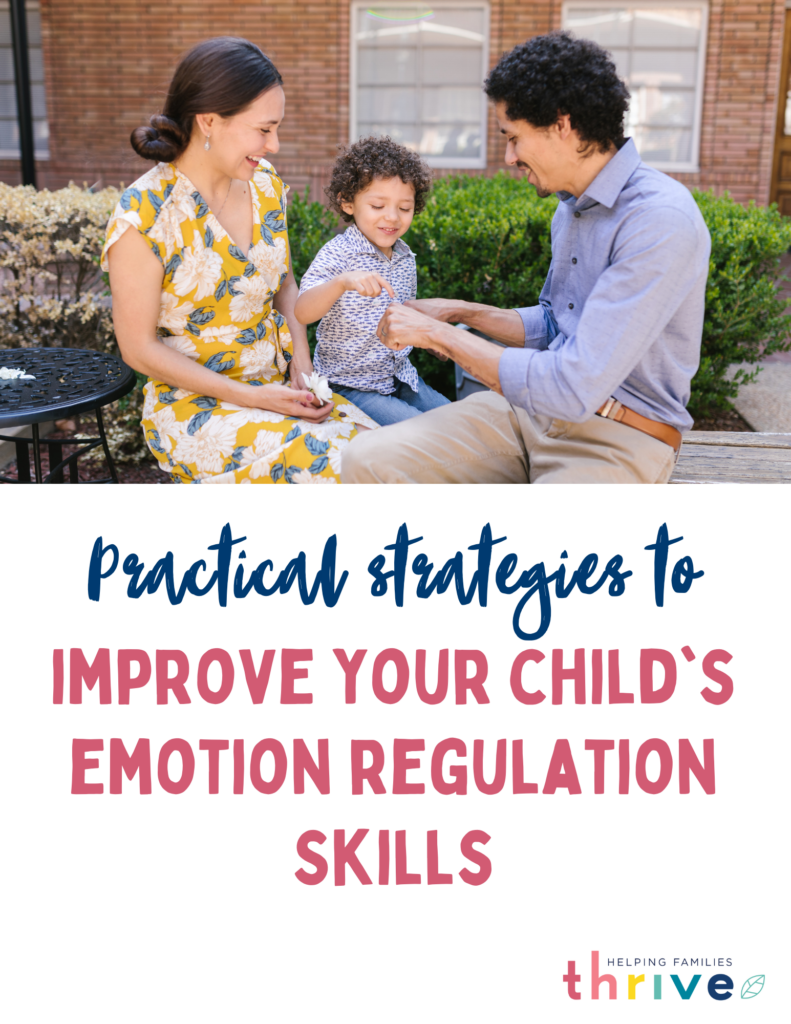
With the rise of the internet and social media there is access to more parenting information and opinions than ever before. One topic that tends to cause division amongst parents is the use of time-out as a form of discipline. Opponents of time-out claim it’s too harsh and will cause lasting damage to children, yet many other parents and professionals defend it as a healthy practice. So, who’s to believe? How did these differing opinions on time-out come to exist? What does the research say?
The HFT team has teamed up with Dr. Cara Goodwin from Parenting Translator to answer these questions. Our collaboration is rooted in our shared value of disseminating only evidence-based, balanced information on healthy parenting while reducing shame and guilt. Let’s take a deep breath, look at the research, and find some balance.
We are research scientists, psychologists and moms. We want to bridge the gap between what we know from manualized, evidence-based parenting interventions and what is floating out on blogs, books, and social media. Parents have enough stress and we need to protect our mental health. The terms “evidence-based” or the “science shows” have become misused.
As practicing psychologists who supervise doctoral students, each year we do an updated, thorough review of all peer-reviewed studies on evidence-based parenting to ensure the information we give to families and trainees is up to date and accurate. We take a similar approach when sharing information on our blog and Instagram. In our opinion, there is a problematic gap between the world of research and the parenting world. Researchers generally aren’t on social media making compelling posts or hiring marketing teams! So, the stuff that sells is not always the stuff of science.
In our clinical work, we have seen families use time-out in an a highly effective, healthy and regulated way as one small tool in their evidence-based parenting toolbox. We have also seen dysregulated, non-evidence based time-outs that have done more harm than good. We’ve observed some families implement effective versions of “time-in” in which they stay a bit closer to their child and offer more verbal or physical support to their child during breaks. And, you guessed it, we’ve also seen the most “gentle” of parents implement very dysregulated and ineffective time-ins.
Both clinically and as a foster and adoptive parent myself, I, Shanna, have worked with children who need a highly structured and predictable response to unsafe behaviors. Many kids who struggle with emotional regulation need time and space when their brains are on fire. When these kids do not get time, space, and consistent responses to their negative behaviors, emotional escalation becomes more likely in both the child and parents.
So, is time-out an effective discipline strategy or could it potentially be harmful to children? Let’s pause here, open our minds, and take a look at the research.
History of Time-Out
The concept of time-out (which is short for “time-out from positive reinforcement”) was developed by a psychologist named Arthur Staats and his graduate student, Montrose Wolf, in the 1960’s. It was created as an alternative to spanking and other forms of physical punishment, which were very popular at the time. The idea was that children would be briefly removed from a rewarding/stimulating environment when they showed a particular challenging behavior –particularly aggression.
Time-out is short for two things: (1) “Time-out from positive reinforcement” and (2) time-out to calm down. First, time-out from positive reinforcement is the principle that, when you take away positive reinforcement (translation: anything in the environment that may feed into or maintain the behaviour such as toys, parents’ and siblings’ attention, or a fun activity), a behavior will occur less frequently. Therefore, this principle can only be applied when the parent provides a positive environment at other times (attention, positive interactions, enriching activities, etc). Basically, most of family time is fun, warm, and stimulating, and when a challenging behavior arises, you have to take a bit of time away from those things (which can be boring!). This behavioural principle is true for adults as well. For example, imagine your phone died when you were waiting at the DMV– it would be boring but tolerable and you would likely be more motivated to charge your phone before the next DMV appointment. Time-out is not meant to cause suffering but just to be very boring.
Second, time-out can also refer to a “time-out to calm down.” Sometimes, time and space is truly needed to calm an overstimulated brain that is not making positive choices. A short break allows the child to calm down so they can re-enter the interaction more successfully. A seminal research study in adults found that sitting quietly reduces anger to a greater extent than expressing it. This is similar to findings in adult relationship and marriage research that shows that when conflict reaches a certain level, more processing or engaging can be counterproductive; instead, evidence-based marriage interventions (such as The Gottman method) recommend that each adult take a 20 minute break away from the situation (an adult time-out, if you will). Research finds that this type of “adult time-out” helps adults to say calm and be less aggressive.
Research in the 1970’s and 1980’s found that time-out was very effective at reducing problematic behavior. In the 1990’s and 2000’s, time-out was included in many parenting intervention programs (translation: programs designed to improve the parenting which would thus improve parent-child relationship and the child’s behavior). As study after study consistently supported the use of time-out, it began to be recommended by nearly all pediatricians and mental health professionals.
It is unclear exactly when the opposition to time-out began but it may have originated in 2014, when Dr. Dan Siegel and Dr. Tina Payne Bryson (the authors of the Whole Brain Child) wrote an article for Time magazine called “Time-Outs Are Hurting Your Child.” In this article, Dr. Siegel and Dr. Bryson argue that time-outs are experienced as rejection by children. They assert that misbehavior in children is often a “cry for help calming down” and a “bid for connection.” They also argue that time-outs make children angrier and more dysregulated, which makes it harder for them to reflect on their behavior. Instead, they suggest that parents use “time in” which involves “sitting with the child and talking or comforting [them]”.
Dr. Siegel and Dr. Bryson reported that brain imaging has supported their claims. They stated that “In a brain scan, relational pain—that caused by isolation during punishment—can look the same as physical abuse.” However, the study they are referring to only included adults, and the adults in this study did not experience isolation during punishment but rather they were left out of a virtual ball-throwing game. The researchers found that social pain during this video game was associated with activation of the anterior cingulate cortex (a brain region also activated during physical pain, as well as problem-solving and processing of all emotions). So this study found that adults who are left out of a video game show brain responses that might be related to some type of pain or emotional responses. While interesting, this is a leap scientifically. It is hard to understand how this study might be applied to time-out and we definitely need further research before concluding that time-out causes the same response in the brain as physical pain.
Siegel and Bryson later clarified that they were only referring to time-outs which were conducted in harsh or punitive ways. They expressed in a follow-up piece (which is still on their website) that they support the use of time-out when it is used “infrequently, calmly, and with lots of support and connection and positive support”. They explained that “the ‘appropriate’ use of time-outs calls for brief, infrequent, previously explained breaks from an interaction used as part of a thought-out parenting strategy that is followed by positive feedback and connection with a parent.” They added that “This seems not only reasonable, but it is an overall approach supported by the research as helpful for many children.”
Yet, despite their retraction, the movement against time-out continued and a research study in 2014 found that 30% of websites on time-out claimed that time-out was either potentially harmful or ineffective (Drayton et al., 2014, Internet guidance on time-out). The researchers also found that most websites (75%) contained contradictory information on time-out and no websites provided information on how to implement time-out according to research.
At the same time, time-out continues to be recommended by most psychologists and pediatricians, as well as the American Academy of Pediatrics, and the American Academy of Child and Adolescent Psychiatry.
So what does the research actually find on time-out?
Does Time-Out Actually Improve Behavior?
First, research finds that time-out “works” in terms of improving children’s behavior. Decades of high quality research finds that time-out is effective at addressing challenging behavior in children ages 3 to 7 years of age (Larzelere et al, 2017). Time-out is included in nearly every research-backed parenting program, including Triple P (Sanders, Kirby, Tellegen, & Day, 2014), Parent Child Interaction Therapy (PCIT; Querido, Bearss, & Eyberg, 2002), The Incredible Years (Webster-Stratton, 2001), Helping the Noncompliant Child (McMahon, Long, & Fore- hand, 2011), and Parent Management Training Oregon Model (Patterson, Reid, & Eddy, 2002).
Many experimental studies have found that time-out decreases sibling fighting, reduces noncompliance and oppositionality (translation: not listening when your parents ask you to do something), and decreases the frequency of aggression and destruction of property. More importantly, randomized controlled trials (the gold standard research design) find that time-out is very effective in increasing children’s compliance to demands (translation: listening to what you ask them to do) and reducing fighting and behaviour problems like aggression and destruction of property. These Randomised controlled trials need to be given significant weight, as they are the highest level of scientific evidence. They go beyond simply showing that two things are correlated (translation: related) and allow us to conclude that parenting programs that include time-out actually causes these positive behavior changes.
Does Time-Out Cause Harm in Any Way?
However, many parents are not worried about only whether time-out improves behavior but also whether it causes emotional harm to their children and how it might impact the parent-child relationship. A 2020 study addressed this very question by examining the impact of time-out on children’s long-term social and emotional development. This study included over 1,000 children and looked at whether parents reported using time-out with their 3-year-olds and how this related to development in pre-kindergarten and fifth grade. They controlled for many important variables, including socioeconomic status, race, and other types of discipline used. The researchers found that when parents used time-out, their children were not more likely to show signs of anxiety or depression, aggression, rule-breaking behaviour, or difficulties with self-control. Time-out was also not associated with any impact on creativity or differences in how the children interacted with the parents or the parent-child relationship. However, the researchers did find that parents’ use of physical punishment was associated with increased rule-breaking and aggressive behaviour.
Older and smaller studies have also addressed this question. One study including families from China, India, Italy, Kenya, Philippines, and Thailand, found that the frequency of time-out was associated with increases in mother-reported levels of child anxiety but not with child-reported anxiety and was not linked to any differences in either mother-reported or child-reported aggression (Gershoff et al., 2010). Very different results were found for harsh discipline tactics, such as spanking/physical punishment, yelling and expressing disappointment (saying that you are disappointed in your child or that their behavior hurt your feelings) which were linked to increased aggression in children.
It is important to note that in both of these studies, the researchers did not train parents in how to implement time-out or measure whether time-out was used “appropriately” (see below for what this means according to research). Therefore, this research suggests that time-out even as implemented by most parents (which is not the way recommended by research) is not associated with negative outcomes.
Now, you might be thinking: “These studies are all correlational… how do we know that time-out doesn’t actually cause any emotional harms?” Fortunately, we also have research suggesting that parenting programs that include time-out do not cause harm and often cause positive changes in children’s mental health. Randomized controlled trials of parenting programs that include time-out (translation: the gold standard of research designs that allow us to actually look at cause and effect) found that these programs were effective in not only reducing behavioural problems but also improving children’s mental health. Specifically, children who complete these programs show fewer symptoms of anxiety and depression and are less likely to show emotional problems. A recent nonrandomized controlled trial also found that a parenting program that included time-out improved children’s mental health.
In addition, research that looks at the different components of these programs found that teaching parents time-out in particular was associated with more positive child and parent outcomes. In other words, programs that included time-out were found to be more effective in improving parent-child interactions than programs that did not. Research also finds that parents show less harsh punishments after learning time-out through one of these programs.
However, it is very important to mention that time-out has rarely been studied outside of the context of these positive parenting programs. Therefore, we do not know if time-out will have these positive outcomes when it is not being used with other positive parenting strategies. This is consistent with the very definition of an evidence-based time-out; all evidence-based programs specify that time-out should only be used when paired with positive parenting strategies.
What about children who have experienced trauma or abuse?
It has been argued that time-out should be avoided with children who have experienced trauma, abuse, or other negative life events (such as divorce or a parent with mental illness). However, a recent study found that these vulnerable children may show even greater improvements in mental health and greater reductions in symptoms of anxiety and depression after completing a parenting program that included time-out. Specifically, the researchers found that children who experienced negative life events showed worse mental health and more symptoms of depression and anxiety before the parenting program BUT no difference was found between the two groups after the parenting program. In other words, parenting programs that include time-out may be even more beneficial for children who have experienced trauma or abuse than children who have not.
What about attachment?
A parenting program that includes time-out called the Video-Feedback Intervention to Promote Positive Parenting and Sensitive Discipline developed for children at-risk for attachment problems found improved attachment security in the children who completed this program including time-out. See here for a meta-analysis including 25 randomized controlled trials of this program.
Based on attachment theory (see this article for an analysis of time-out in light of attachment theory), we know that separations from parents are an important part of any attachment relationship. In fact, a secure attachment is characterized by regular separations that allow the child to develop important independent skills followed by reunion with the caregiver. As long as the child knows the separations are temporary and they are predictable, there is no reason to think that they would damage the attachment relationship.
In the context of time-out, if parents are able to explain time-out to their child in advance, stay calm, use time-out in a consistent and predictable manner, and have a positive reunion with their child after time-out, then there is no reason to think it would damage the attachment relationship. Parents should be clear that time-out is not a rejection of the child or because they are “bad.”
Parents should also consider whether, by not using time-out, they are actually showing more unpredictable behavior. For example, parents who do not use time-out may be very patient and emotionally validating the first few times a child shows challenging behavior in a day and then may eventually yell at the child when it keeps happening. This type of unpredictable parent responses (in which the parent stays calm until they can’t take it anymore and then explodes) may be worse for the attachment relationship.
On the other hand, some parents may show more unpredictable behavior when using time-out. They may calmly implement time-out in some situations but angrily implement time-out when they become dysregulated, using tactics such as physically forcing their child to stay seated or shaming their child. In this case, time-out may have a negative impact on the parent-child relationship.
What about “time In”?
The gentle parenting movement often recommends “time-in” as an alternative to time-out. This term is a little confusing because in the research, “time in” refers to any time that a child is not in “time-out,” meaning any normal interactions between a parent and child. However, as the movement against time-out has gained traction, the term “time in” has been co-opted to be an alternative to time-out when the parent is present with the child validating their emotions and helping them to calm down. Yet, research has yet to study whether “time in” is an effective method. When a method has not been researched, it doesn’t mean that it doesn’t work, it only means that we have no evidence that it does. If it works for you and your child, it doesn’t matter that it is not supported by research and you should continue to use “time in.” However, if it is not working for you or your child, parents should feel free to use another approach without guilt that they failed as a gentle parent.
There is research supporting emotional validation (this approach is called “emotion coaching”), but emotion coaching should ideally be used when the child is calm and not immediately after challenging behavior. Emotion coaching is more of a general approach to discussing and empathizing with your child’s emotions. Randomized controlled trials have found that emotion coaching is effective at reducing problem behaviors (Duncombe et al., 2016; Havighurst et al., 2013). However, research also finds that emotion coaching may be more effective for children older than 8 years, while behavior parent training (translation: the type of program that uses time-out) may be more effective for children under 8 years (Duncombe et al., 2016). Across children of all ages, research found no differences in child behavior between emotion coaching programs and the programs that used time-out.
If opting to use time-in, there are some potential traps that parents should watch out for. First, individual differences matter. The idea of co-regulation (translation: adult helping regulate their child who is struggling to self-regulate) has been oversimplified in popular parenting culture. Co-regulation, as defined in the research has nothing to do with physical proximity or verbal processing while a child is upset (for more on co-regulation, see this coregulation blog post); Thus, one child might co-regulate beautifully next to their parent saying “I’m here buddy, I got you” while another child might scream that they want and need space and are only increasingly agitated by their parents presence and attempts at time-in.
A second problem with “time in” (or emotion coaching after challenging behaviour) is that parents may unintentionally end up paying more attention to children when they are showing challenging behaviors (aggression, yelling, etc) than positive behaviors (being kind, helping, playing independently, etc), which then increases the frequency of the challenging behaviors and decreases the frequency of the positive behaviors. This could create a vicious cycle in which challenging behaviors become so frequent that the parent eventually loses patience and resorts to harsh and ineffective parenting strategies.
In addition, time-in will only work if you stay calm as a parent. If you are distressed as a parent, it is hard to effectively coach your children through their own distress.
TRANSLATION: If time-in works better for your child and your family, you can definitely use this approach. However, you may want to be careful to also pay more attention to positive behaviors than negative behaviors and to only use time-in when you are calm yourself.
So Should I Use Time-Out?
As with all parenting decisions, you can use the research as a guide but ultimately you as a parent are the only one who knows what is best for your child and your family. Time-out is an effective tool that parents may or may not choose to use. This decision should not be based on fear or misinformation, but rather guided by evidence-based information, intuition, and your values and knowledge of your specific child and family. If it does not feel right to you as a parent to use time-out, then it is important to know that the research does not indicate that you must use time-out in order to be an effective parent. Just because time-out is a healthy option, does not mean it is a tool you must use to be a healthy parent!
Even in light of this research finding no harms of time-out, it is also important to remember the limitations of time-out. Time-out does not teach your child what to do instead of the challenging behaviour and does not teach them about their emotions. This is why time-out is never taught in isolation.
Want to learn more about how to teach children to take breaks and how to implement evidence-based time-outs? Stay tuned for next month’s blog post on the topic where we walk you through step-by-step! We also provide comprehensive instruction on all core evidence based parenting strategies, including time-out, in our comprehensive e-course.
A huge thank you to Dr. Goodwin for her collaboration on this complex topic.






4 Comments
Comments are closed.